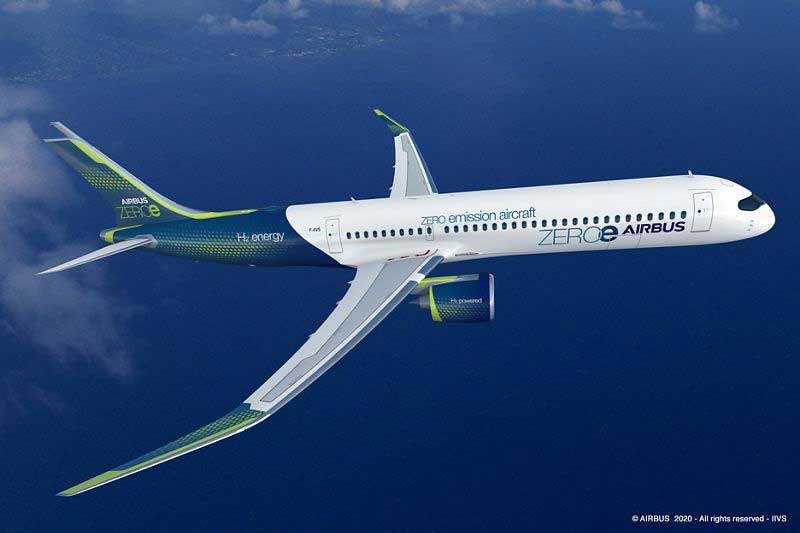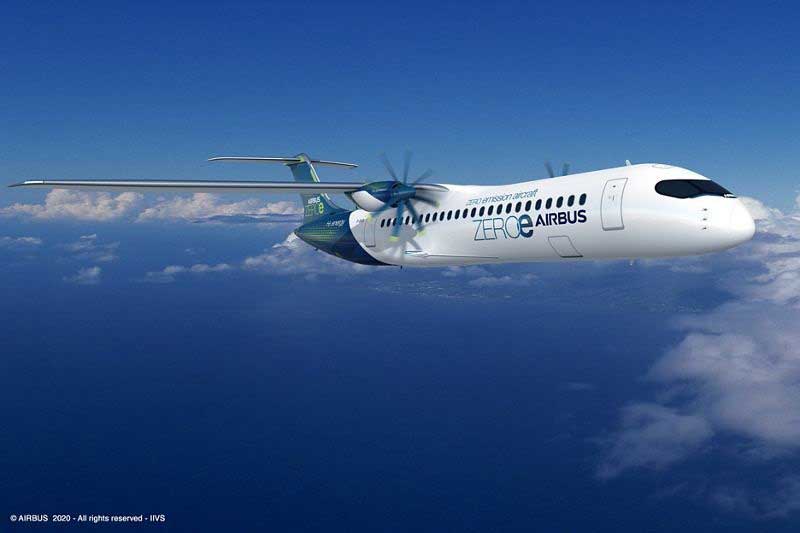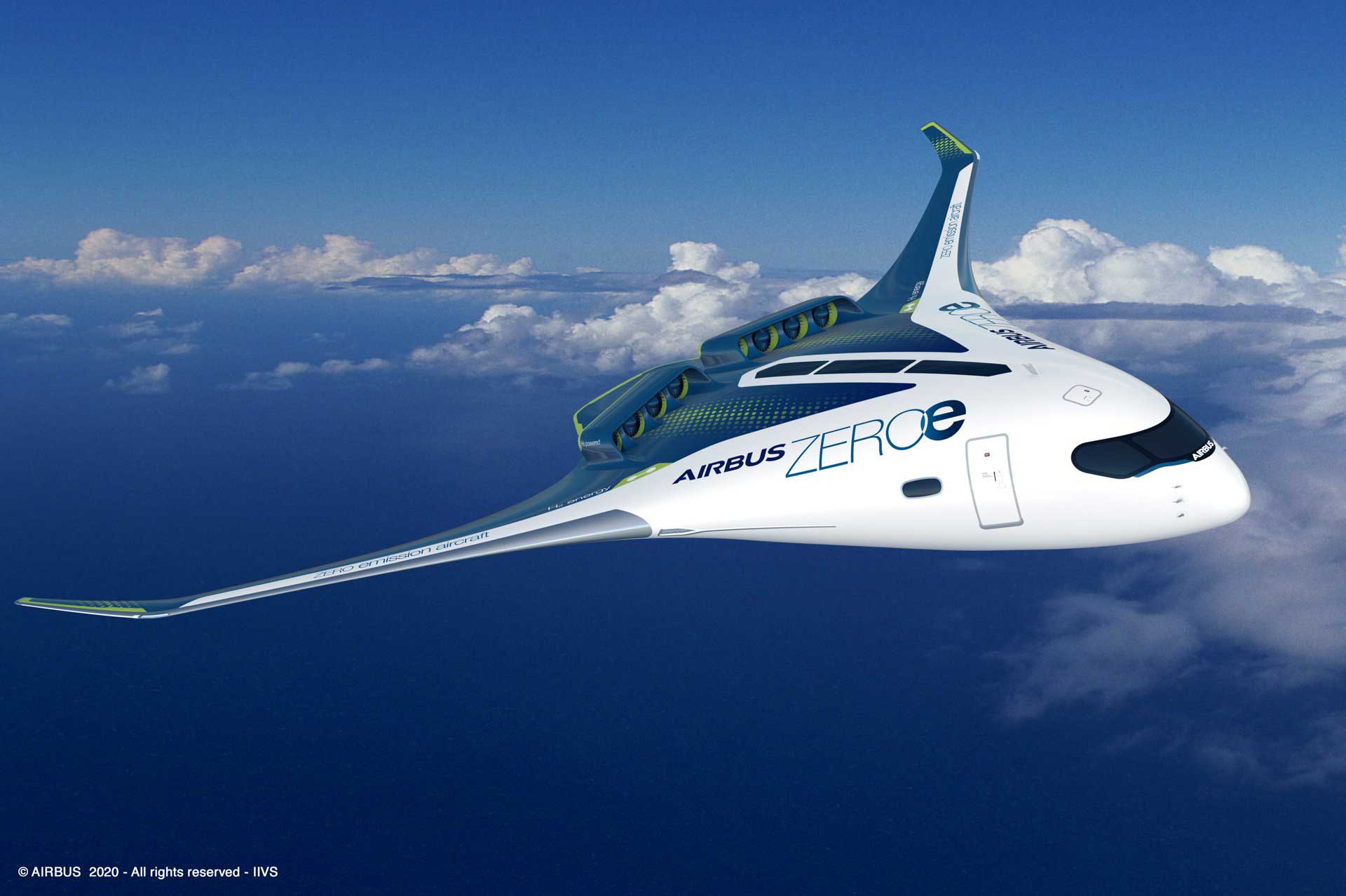September 2020
Airbus has presented three concepts for the world's first zero-emission commercial aircraft, which could be put into service in 2035. Each concept includes a different technical approach to zero-emission flying, studying different technologies and aerodynamic configurations. With this, Airbus wants to take the lead in phasing out fossil fuels and thus in 'decarbonising' the aviation industry. A year ago, Airbus officially opened the E-Aircraft Systems House in Taufkirchen-Ottobrunn (Germany) as a test center for alternative propulsion systems.
The primary source of energy in all three cases is hydrogen, which the company believes is particularly suitable as an environmentally friendly fuel and could be a solution for achieving the corresponding climate neutrality goals, not only in the aerospace industry, but also in many other sectors.
Ambitious goals and bold vision
“This is a historic moment for all commercial aviation. Our ambition is to play a leading role in this most significant transformation our industry has ever experienced. The concepts we present today give the world a first look at our ambitious goals and bold vision to shape the future of zero-emission flying,” said Airbus CEO Guillaume Faury.
Three different concepts
“I firmly believe that the use of hydrogen – both as part of synthetic fuels and as the main energy source for commercial aircraft – can significantly reduce the impact of aviation on the climate.”
The three concepts, all codenamed “ZEROe”, comprise substantively different design concepts for the first climate-neutral and zero-emission airliner.
Intercontinental flights
First, the turbofan design (120-200 passengers) with a range of more than 3,700 kilometers for intercontinental flights and a modified gas turbine engine that burns hydrogen instead of fossil fuel. The liquid hydrogen is transported in tanks located behind the rear bulkhead.

Turbo prop
The second concept is a Turboprop design (up to 100 passengers) with a turboprop instead of a turbofan engine, also based on hydrogen combustion in modified gas turbine engines, and an optimal range of more than 1,850 kilometers for short-haul flights.

Blended Wing Body
The third and perhaps most innovative design is the blended-wing body (up to 200 passengers) where the wings and fuselage merge; the range is comparable to that of the turbofan concept. The particularly wide hull offers various options for the storage and distribution of hydrogen, as well as different cabin layouts.

To combine forces
“These concepts will help us continue to work intensively on the design and layout of the world's first carbon-neutral, zero-emission airliner and make it operational by 2035,” said Guillaume Faury. “The switch to hydrogen as the primary energy source for these three aircraft concepts requires decisive action from all those involved in the entire aviation sector.
“By joining forces with governments and industry partners, we can meet this challenge and expand the use of renewable energies and hydrogen for a sustainable aviation future.”
Digitization
This requires, among other things, that the airports maintain an infrastructure that enables the transport and refueling of hydrogen in regular airport activities. Key to achieving these ambitious goals will be government support, for example through increased funding for research and technology, the expansion of digitization and mechanisms to promote the use of sustainable fuels, and the modernization of commercial aircraft fleets so that airlines can operate sooner. stop using older, less environmentally friendly aircraft.